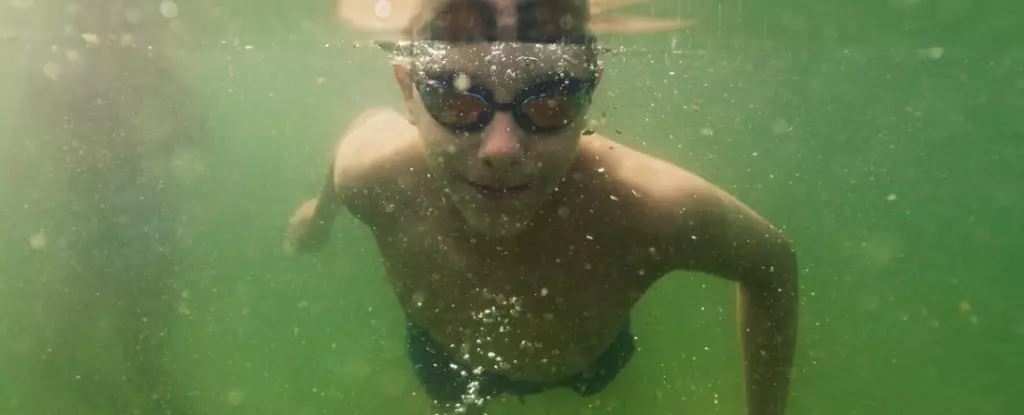Swimming in bodies of freshwater can be a refreshing relief during hot summer months. Many people flock to lakes, rivers, and pools to cool off and enjoy leisure time. However, beneath the surface of these seemingly inviting waters lurks a sinister threat: Naegleria fowleri, commonly referred to as the “brain-eating amoeba.” This microscopic organism can be deadly, leading to a rare but devastating type of infection known as primary amoebic meningoencephalitis (PAM). Understanding the risks associated with this pathogen can save lives; knowledge and precautions are the keys to safe summer fun.
Naegleria fowleri has been the subject of healthcare discussions since its first discovery in the 1960s in Australia, following a spate of unusual meningitis cases. This free-living amoeba is most commonly found in warm freshwater environments, such as hot springs, lakes, and improperly maintained swimming pools. Its optimal temperature range for survival lies between 25°C and 40°C, making it prevalent in warmer climates. Unlike more familiar pathogens that pose risks via consumption, Naegleria fowleri has a unique method of infection—it enters the human body through the nasal passages, allowing it to navigate to the brain, where it wreaks havoc.
The reality of the threat posed by this organism is sobering. In the United States alone, the Centers for Disease Control and Prevention (CDC) report a 97.5% fatality rate associated with infections from this amoeba. This staggering figure underscores the importance of vigilance when swimming in warm freshwater sources. The primary demographic affected tends to be young males, typically around 12 years of age, highlighting a need for increased awareness for families with young children and adolescents.
While swimming in freshwater poses a risk of infection, it’s essential to understand that not all water sources are equally dangerous. Naegleria fowleri thrives in warm environments but cannot survive in chlorinated swimming pools or ocean saltwater. Municipal water systems undergo rigorous treatments, rendering them safe from this pathogen. However, lakes, rivers, and hot springs may contain the amoeba, particularly during warmer months when water temperatures rise.
The infection pathway is notably unusual, with individuals not becoming infected through ingestion but rather through water entering the nasal cavity. This means that activities often associated with swimming—diving, splashing, or even rinsing nasal passages with unidentified water—can inadvertently lead to tragic consequences. Early symptoms of infection include headaches, nausea, fever, and neck stiffness, reminiscent of more common illnesses. Unfortunately, the window for effective treatment can be narrow, often taking only a few days from initial exposure to severe symptoms onset. Thus, prompt medical attention is crucial if symptoms arise after exposure to potentially contaminated water.
Given the alarming statistics surrounding Naegleria fowleri and its potential dangers, it is imperative to adopt safety measures when engaging in freshwater swimming. One of the simplest recommendations is to avoid putting one’s head underwater in lakes, rivers, and poorly maintained pools. This precaution may seem limiting, particularly for children, who naturally thrive on splashing and playing in water. Supervision becomes critical; guardians should monitor pool and lake play, ensuring children refrain from activities that could lead to water entering their noses.
If choosing to swim in a freshwater pool, it’s essential to verify that the establishment maintains proper hygiene and chlorine levels. Well-disinfected pools afford a much higher level of protection against not only Naegleria fowleri but also other waterborne pathogens. In more natural freshwater settings, it’s advisable to seek out areas that have undergone testing and monitoring for amoeba presence.
While the chances of contracting a Naegleria fowleri infection are exceedingly low, the outcomes of infection underscore the importance of awareness and precaution. The narrative surrounding “brain-eating amoebas” can easily become sensationalized; however, it masks a reality that demands respect for our natural water sources. As sweltering summer days beckon beach trips and swimming adventures, let us approach these activities with informed caution. By following safety guidelines and educating ourselves and those around us, we can enjoy the summer without temptation’s lurking dangers. Remember, staying safe today means ensuring a healthier tomorrow, even amidst the joys of swimming in refreshing waters.


Leave a Reply